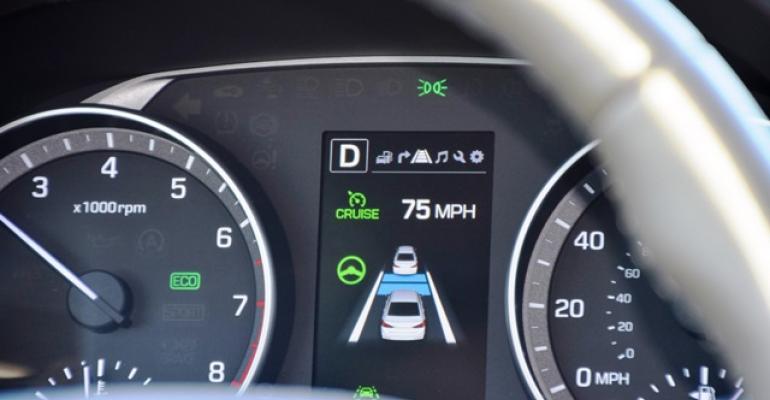In today’s technology-driven world, it is relatively easy for an expensive luxury brand to rise to the top Wards 10 Best User Experience list by loading all the latest wizardry into its vehicles. So it comes as somewhat of a surprise when a value leader like the ’17 Hyundai Elantra crashes the party.
The least-expensive entry in our field of 29 nominees – checking in at just $27,710 – our Limited tester offered an array of capabilities and high-tech gadgetry that even some of the most-expensive nominees couldn’t muster, from highly dependable adaptive cruise control to responsive voice control and from multiple-source connectivity to premium sound.
My notes praising the Elantra’s adaptive cruise control were effusive: “This is a stunning level of active driver assistance at this price point. Part of my rating is based on consistency – does it give me confidence that it will pick up cars ahead and stop every time, or just some of the time? The Elantra knocks it out of the park on consistency. This car’s ability to bring itself to a near stop is amazing.”
Note the “near stop” phrasing. The Elantra made our list despite not having full-range cruise control – that is, the ability to bring the car to a complete stop without driver intervention, an attribute most of our award winners were capable of doing. Instead, the Elantra automatically slows itself down to 5 mph (8 km/h), providing clear visual and audible warnings when it is relinquishing control, allowing the driver to take over braking and come to a full stop.
Hyundai tells us the Elantra’s lack of an electronic parking brake prevents it from being able to handle full stopping, unlike the more-expensive midsize Sonata sedan that does have an e-brake and does offer full-range adaptive cruise control.
Despite this shortcoming, the Elantra’s consistently dependable adaptive cruise control as well as functional lane-keeping assistance and pedestrian alert earned it major points, especially when one considers relative value.
“For the money, I can’t think of another vehicle that delivers active lane assist and ACC that will creep you through traffic and take you to almost a full stop before handing back control. I was very impressed,” said one judge who also noted the Elantra alerted him to two pedestrians who were about to step into a crosswalk at an intersection.
Said another: “This is where the Elantra absolutely shines: Lane keeping and ACC put this car in a technology league with luxury cars three times the price.”
It should be noted while one element of the judging criteria for Wards 10 Best User Experience is functionality of Active Driver Assistance Systems (ADAS) such as lane-keeping assist and adaptive cruise control, our testers are always actively engaged in piloting test vehicles. We recognize assistance systems may offer some level of semi-autonomous capability but are not intended to allow fully autonomous vehicle operation.
Awed as we were by the Elantra’s ADAS capabilities, our judges also were pleasantly impressed by the car’s excellent voice controls, distinct maps and accurate navigation, quick reaction time, ample connectivity options and little surprises like illuminated USB ports.
Well done, Hyundai – and welcome to the party.
[email protected] @bobgritzinger





